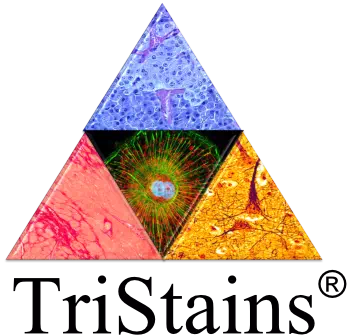Bromophenol Blue Free Acid CAS: 115-39-9 | MF: C19H10Br4O5S | MW: 669.96, Buy now for accurate and Reproducible results from Tristains indicators. All Tristains products are exclusively distributed by Dawn Scientific Inc.
Bromophenol blue free acid, also known simply as bromophenol blue, is a dye and pH indicator. It typically appears as a dark blue powder or crystalline solid. Its chemical formula is C19H10Br4O5S. In acidic conditions, it appears yellow, while in alkaline conditions, it turns blue. It is sparingly soluble in water but more soluble in alcohol and other organic solvents. Bromophenol blue is derived from phenol, a simple aromatic organic compound. Bromophenol blue free acid is a commonly used chemical compound with various applications in scientific research, particularly in biology, chemistry, and molecular biology.
TriStains provides a marketplace for histology and biological stains, which is comprehensive enough to encompass the peculiar requirements of laboratories specializing in Histology, Cytology, Microbiology, and Hematology. With a reputation for exceeding quality expectations, TriStains performance is outstanding which allows for resolution of cell and tissue components fundamental to life sciences to be clearly visualized. Each product under TriStains series is validated for accuracy, reliability and consistency. TriStains, which manufactures and markets stains and indicators in various packing, offers laboratories turn key solutions for all their staining and indicator needs, improving accuracy in every experiment.
Application :
- Bromophenol blue free acid is used as a pH indicator in various applications like acid base titrations.
- It is commonly used in gel electrophoresis, a laboratory technique used to separate DNA, RNA, or proteins based on their size and charge.
- It can also be used as a protein stain in polyacrylamide gels.
- In microbiology, bromophenol blue can be used as an indicator of carbohydrate fermentation in certain bacterial cultures.
Benefits :
- Versatile and stable
- Affordable
- Relatively broad pH range for color change













Reviews
There are no reviews yet.